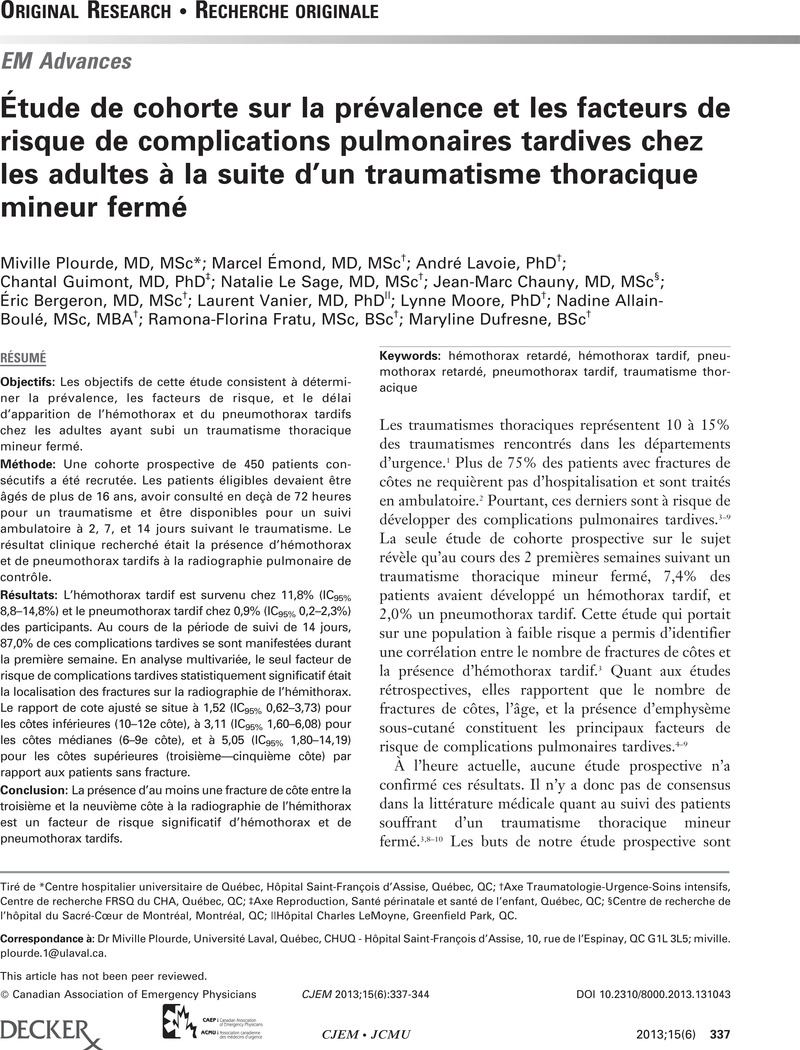Crossref Citations
This article has been cited by the following publications. This list is generated based on data provided by Crossref.
Émond, Marcel
Sirois, Marie-Josée
Guimont, Chantal
Chauny, Jean-Marc
Daoust, Raoul
Bergeron, Éric
Vanier, Laurent
Camden, Stephanie
and
Le Sage, Natalie
2015.
Functional Impact of a Minor Thoracic Injury.
Annals of Surgery,
Vol. 262,
Issue. 6,
p.
1115.
Émond, Marcel
Guimont, Chantal
Chauny, Jean-Marc
Daoust, Raoul
Bergeron, Éric
Vanier, Laurent
Moore, Lynne
Plourde, Miville
Kuimi, Batomen
Boucher, Valérie
Allain-Boulé, Nadine
and
Le Sage, Natalie
2017.
Clinical prediction rule for delayed hemothorax after minor thoracic injury: a multicentre derivation and validation study.
CMAJ Open,
Vol. 5,
Issue. 2,
p.
E444.
Chokshi, Tanvi
Theodosopoulos, Alexandra
Wilson, Ethan
Ysit, Michael
Alhadi, Sameir
and
Ranasinghe, Leonard
2021.
A Case Report of Delayed Hemothorax Complicated by Fibrothorax.
Asploro Journal of Biomedical and Clinical Case Reports,
Vol. 4,
Issue. 3,
p.
184.
Battle, Ceri
Cole, Elaine
Carter, Kym
and
Baker, Edward
2024.
Clinical prediction models for the management of blunt chest trauma in the emergency department: a systematic review.
BMC Emergency Medicine,
Vol. 24,
Issue. 1,



